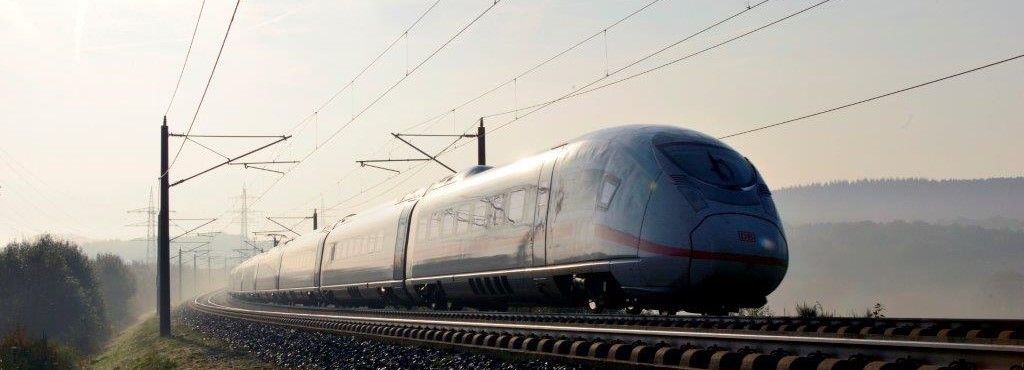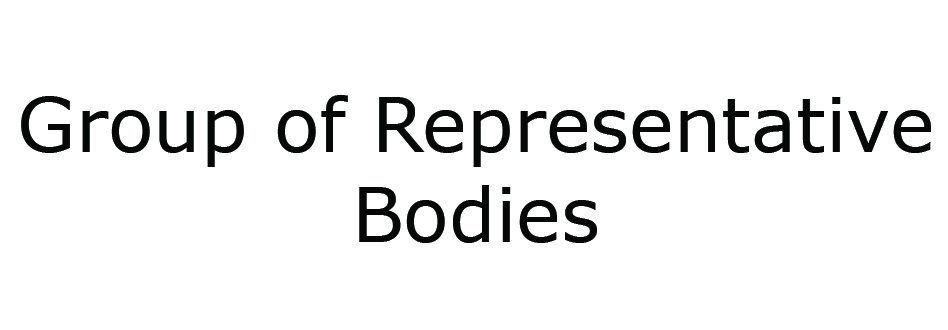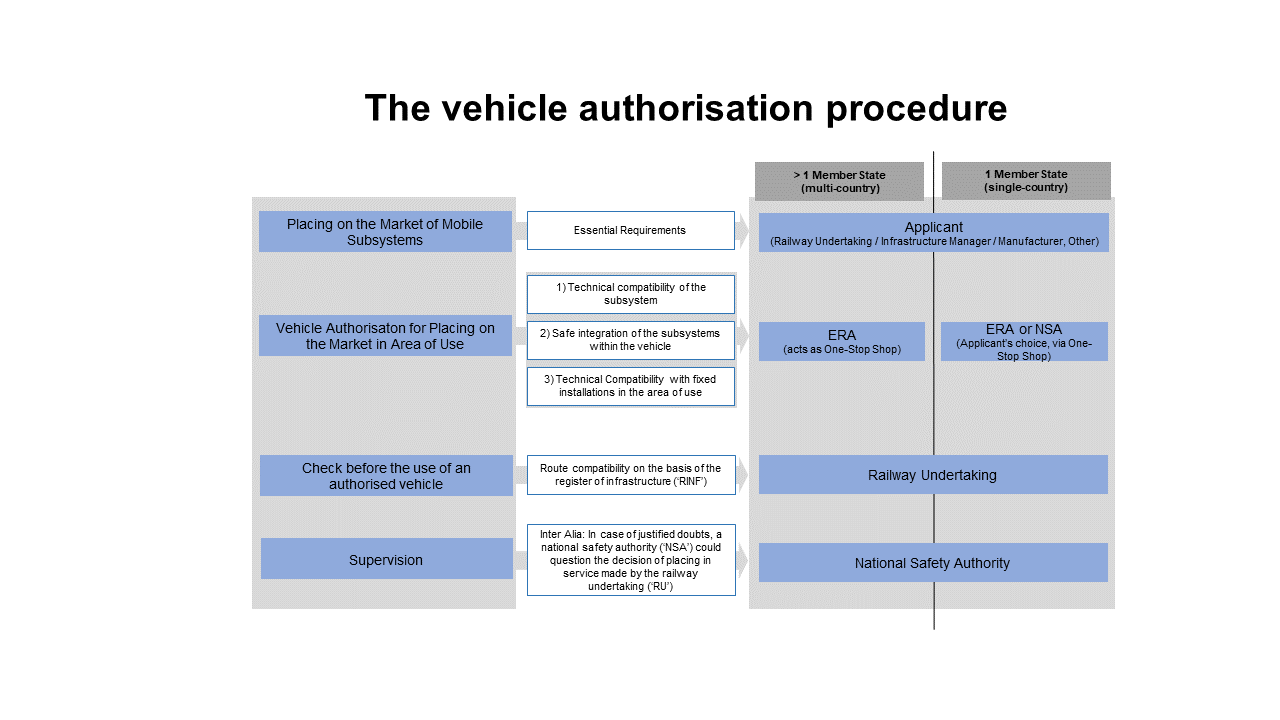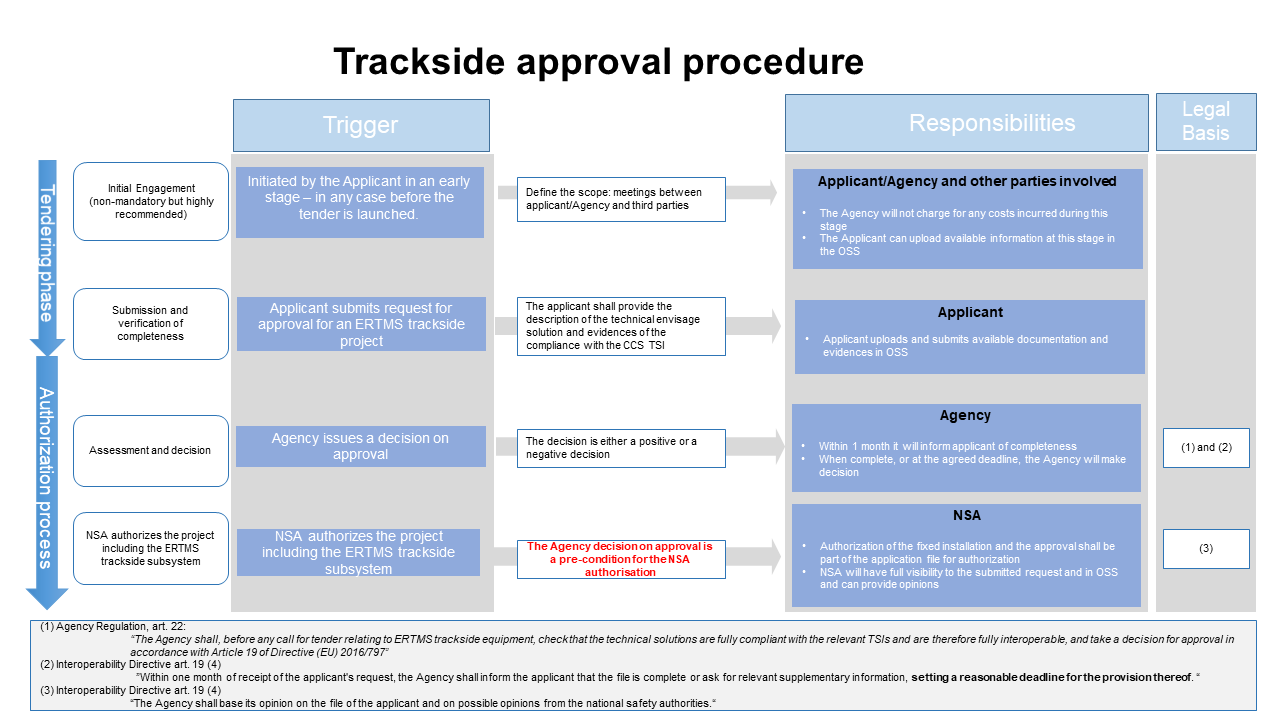4th Railway Package - Guide

Since 1991, the European railway sector has constantly been reformed by the European Union. The 4th Railway Package, which was adopted in 2016 is by far the largest and most complex legal initiative introduced so far. The 4th Railway Package consists of a political and a technical pillar which introduce substantial reforms for all stakeholders concerned.
The Guide below (drop-down menu) illustrates in four different chapters the reforms in the field of vehicle authorisation, safety certification and ERTMS trackside approval as well as the new role of the European Union Agency for Railways as ‘frequently asked questions’. Given the fact that the implementation of the 4th Railway Package is an ongoing process, the Guide will be updated on a regular basis, in line with the progress of the reforms being made on EU level.
Christian Rausch
Chairman of the Group of Representative Bodies (GRB)
What is the Interoperability Directive?
- This Directive establishes the conditions to be met to achieve interoperability within the Union rail system in a manner compatible with Directive (EU) 2016/798 in order to define an optimal level of technical harmonisation, to make it possible to facilitate, improve and develop rail transport services within the Union and with third countries and to contribute to the completion of the single European railway area and the progressive achievement of the internal market. Those conditions concern the design, construction, placing on the market, placing in service, upgrading, renewal, operation and maintenance of the parts of that system as well as the professional qualifications of, and health and safety conditions applying to, the staff who contribute to its operation and maintenance.
- This Directive lays down the provisions relating to, for each subsystem, the interoperability constituents, the interfaces and procedures, and the conditions of overall compatibility of the Union rail system required in order to achieve its interoperability
- This Directive defines the subsystems, either structural or functional, forming part of the railway system of the European Union. For each of those subsystems, the essential requirements need to be specified and the technical specifications determined, particularly in respect of constituents and interfaces, in order to meet those essential requirements. The essential requirements as defined in Annex 3 of the directive are safety, reliability and availability, health, environmental protection, technical compatibility and accessibility.
How did EU interoperability legislation evolve?
Technical interoperability is at the core of virtually any reform of the EU railway sector. To create the single European railway area with smooth cross-border train operations, the EU decided to impose harmonisation of technical interfaces and subsystems in the form of technical specifications for Interoperability.
The first such Directive was adopted in 1996 with 1996/48/EC on the interoperability of the trans-European high-speed rail system. This was accompanied 5 years later by Directive 2001/16/EC on the interoperability of the trans-European conventional rail system, both of which were then amended 3 years later by 2004/50/EC. As new amendments were introduced, in 2008 it is deemed appropriate to recast the Directives for the sake of clarity and to merge their provisions together into a single instrument with a view to simplification. This resulted in Directive 2008/57/EC on the interoperability of the rail system within the Community. Further minor amendments to 2008/57/EC were made in 2009 by 2009/131/EC and 2011 by 2011/18/EU.
⇒ With each Directive, the EU extended the scope of interoperability and strengthened the interlinking and technical harmonisation of the national rail networks with the aim of establishing an area without internal frontiers and therefore improved access and competition.
What is 2016/797 about?
Directive 2016/797 extends the scope of interoperability whilst introducing a new streamlined and harmonised process for vehicle authorisation and for ERTMS trackside approval at EU level. For that purpose, ERA has been given an enhanced role as the European authorising entity and is developing several new tools and processes, such as:
- a One-Stop Shop (OSS) IT tool which serves as the IT-portal for all stakeholders to submit their applications for vehicle authorisation as well as single safety certification and ERTMS Trackside approvals;
- a Board of Appeal (BoA) which will serve as body deciding on litigation cases;
- enhanced databases (i.e. Register of infrastructure (RINF), a new European Vehicle Register (EVR) replacing ECVVR and a new Single Rules Database (SRD) replacing RDD in the future, among others.
What is the scope of 2016/797?
The Directive applies to:
- the entire Union rail system;
- ‘tram-trains’ as when they operate on national rail infrastructure;
The Directive does NOT apply to (unless Member States do not decide otherwise):
- Local public transport systems (metros, trams and other light rail systems);
- privately owned railway infrastructure (incl. sidings);
- local, historical or touristic infrastructure and vehicles;
- light rail infrastructure occasionally used;
- vehicles primarily used on light rail infrastructure.
What are the main changes?
The main changes in 2016/797 are summarised below:
ERA:
- the Agency will issue vehicle authorisations and approve ERTMS trackside tender approvals;
- more details can be found in the chapter on the ERA Regulation.
TSIs:
- the cases for possible non-application of TSIs is reduced;
- TSIs should indicate when the upgrade and renewal of infrastructure and vehicles requires a new authorisation;
- the EC published a delegated act defining the Agency’s mandate and objectives for the forthcoming TSI revisions starting in September 2017.
RUs/IMs:
- the role of RUs and IMs in the technical route compatibility processes via the register of infrastructure (‘RINF’) is re-defined.
How will the new processes look like?
Directive 2016/797 defines the procedure for vehicle authorisation and ERTMS track-side approval:
- the procedure for vehicle authorisation is defined in the VA implementing Regulation (EU) 2018/545 and the corresponding guidance;
- Directive 2016/797 foresees that all applications for national and international vehicle authorisations as well as for the approval of ERTMS track-side equipment tenders have to be submitted to the ERA via the One-Stop-Shop(OSS)[1];
- the applicant can still choose the relevant NSA as authorising entity if the area of use is limited to one Member State;
- the ERA can outsource the processing of the applications to individual experts via a pool of external experts (incl. those of NSAs);
- the recommendation of NSAs involved in the application procedure will have to be taken into consideration by the ERA with all approvals;
- the ERA will charge fees & charges for the processing of the applications following a pre-defined calculation method;
- in the case of a positive opinion, the ERA will grant the vehicle authorisation or the approval of the ERTMS track-side component tender to the applicant;
- following the positive decision of the ERA, the NSA will then continue processing the ERTMS track-side equipment tendering.
More information:
- Vehicle authorisation - https://www.era.europa.eu/applicants/applications-vehicle-type-authorisations_en
- ERTMS Trackside approval - https://www.era.europa.eu/applicants/applications-ertms-trackside-approval_en
[1] Directive 2016/797 stipulates that all applications, whether they are national or international, will have to be submitted and processed via the ERA IT tool. This will then also involve cases which are handled by national actors only (i.e. the NSA and the national applicant) for national vehicle authorisations. This will imply that NSAs review their processes.
Will there be a transition period?
Article 55 of (EU) 2018/545 sets out the transitional provisions for the new regime. These are of particularly importance for all pending applications with NSAs and their further processing by the ERA from 16th of June 2019 onwards, in particular the practicalities for transferring applications and the acceptance and processing by ERA of those parts already assessed by the NSAs.
Some Member States have decided to extend the transposition of the directive until 16th June 2020. With regard to the transposition dates in the respective Member State please refer to the table above.
In addition, ERA has to sign a cooperation agreement with each national safety authority (NSA).
Which role will NSAs have in the future?
- The NSA will issue vehicle authorisations for single country applications (single Member State only) when selected by the applicant;
- The NSAs remain responsible for the supervision of the railway actors at national level;
- For all other cases, the NSA role will be limited to the assessments for the defined area of use based on national rules (if any);
- The same system of cooperation between the Agency and the NSA also exists for ERTMS track-side approvals.;
- For this dual system to work, the ERA must have concluded a cooperation agreement with each NSA prior to their national implementation.
The future cooperation between NSAs and the ERA will require cooperation agreements to be signed, audit tools to be approved and NSAs to agree with the usage conditions of ERA’s application tool (OSS), the appeal processes and the fees & charges related to authorisations and approvals.
How much will the new procedure costs?
The ERA Regulation foresees that the Agency will charge for the services provided under the Interoperability Directive. The rules for fees and charges are laid down in Commission Implementing Regulation (EU) 2018/764.
It is worth noting that the vehicle authorisation procedure already exists in the EU and for which fees & charges are levied by NSAs. However, the approval of ERTMS track-side equipment tenders is a new procedure. Therefore, IMs will have to prepare for a new procedure and costs as regards to ERTMS track-side equipment.
What is the role of the Appeal Body?
- The Interoperability Directive stipulates that the ERA and the NSAs take full responsibility for the authorisations they issue;
- In the case of litigations related to a vehicle authorisation, the applicant shall refer its case to a so-called ‘Board of Appeal’ of the ERA;
- This body will be composed of experts which are appointed by the Management Board of the ERA (Member States/NSAs, EC, ERA);
- In the case of diverging views between the ERA, the NSAs and / or the applicant, the Board of Appeal shall provide an opinion;
- The ERA will charge fees & charges for the opinion of the Board of Appeal to the plaintiff.
- The Appeal Body’s Rules of Procedure are laid down in Commission Implementing Regulation 2018/867
More information: https://www.era.europa.eu/agency/board-appeal_en
What are the next steps?
- 16/02/2019: The OSS becomes operational allowing the submission of applications for vehicle authorisation;
- 16/06/2019: ERA starts full operation and issue vehicle authorisations for those Member States having transposed the Interoperability Directive;
- 16/06/2020: ERA issues vehicle authorisations for all MSs which have transposed 2016/797.



